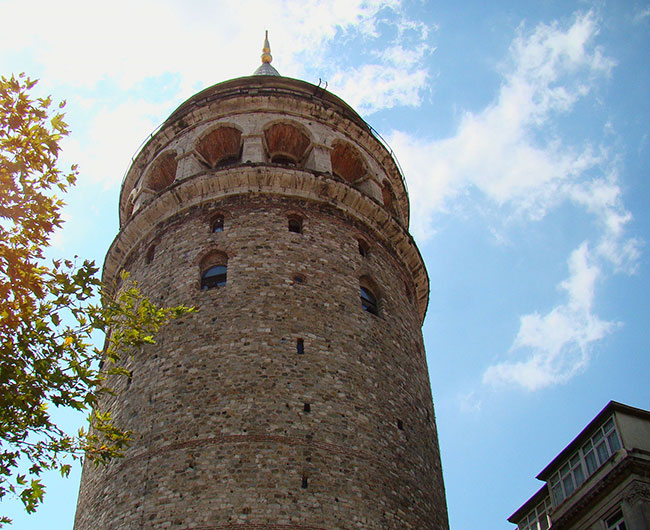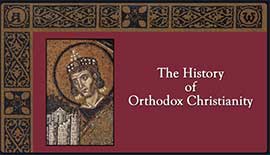SYRIGOS CHOSE ORTHODOXY AND A LIFE OF CONTROVERSY

[Galata Tower was 300-years-old when Syrigos began his ministry in the city.—Bjørn Christian Tørrissen / [CC BY-SA 3.0] Wikimedia File:Galata Tower Top To Bottom.JPG]
MARK SYRIGOS was born in Candia, Crete, c. 1586; Crete was then under control of the Republic of Venice. He learned all he could in the island’s limited educational facilities, hoping to become a physician, then sailed to Italy to continue his studies. In Venice he sat under Theophile Korydaleus, but a quarrel about fees and his dislike for his teacher’s views created a long-lasting animus in the pupil toward the teacher. Syrigos moved to Padua, but received notice his father had died, and returned to Candia—only to learn that his mother also was dead.
Without resources, Mark entered a monastery, taking the name Meletios (or Meletius). Under Venetian rule, Crete inclined to Roman Catholicism, but Syrigos became an Eastern Orthodox priest. His animosity toward Catholics forced him out of his home town. Appointed to a leadership position at Kali Limenes, a pilgrimage destination in Crete associated with the Apostle Paul, he showed his distaste for Roman Catholicism by cleansing an altar after masses had been held on it. Since these masses had been approved by Crete’s governor, Syrigos was marked as a trouble-maker and sentenced to death.
He escaped to Alexandria, Egypt. Patriarch Cyril Lucaris (Cyril I) invited Syrigos to Constantinople. Because of Muslim persecution, the Orthodox were short of teachers and priests. Jesuits had moved in to fill the gap and Lucaris needed educated co-workers to train church leaders in Orthodox theology and refute the Jesuit theologians. He assigned Syrigos to Galata, a town across the waterway north of Constantinople.
Syrigos went on a mission to Moldovia in 1632. He made a longer stay there during 1635-1637 and translated a polemic against Islam. Moldavia’s ruler, Basil the Wolf, relied heavily on Syrigos in religious affairs. Meanwhile, Syrigos was growing cool toward Lucaris, who was accused of Calvinism. A church council anathematized Lucaris in 1638, the year he was murdered by the Ottoman sultan, but later Orthodox scholars cleared him of Calvinism and the church declared him a martyr. When Korydaleus preached a sermon in favor of Lucaris at the installation ceremony of Cyril II (an opponent of Lucaris), Cyril II had Syrigos preach a refutation, which he did with such vehemence that the mob would have killed Korydaleus if he had not taken refuge in the home of a powerful friend. Korydaleus later served as a Metropolitan in Greece.
Syrigos was exiled from Constantinople by patriarch Parthenios I and various successors, and also recalled according to the theology of whichever patriarch held power at the time. He is best known for his translation into common Greek of the Expositio fidei, a confessional statement by Metropolitan Peter Mohlya of Kiev (aka Movilà). Following participation in a conference at Jassy, Syrigos proceeded to Kiev where he entered discussions with Mohlya and his clergy and assisted in diplomatic negotiations regarding the marriage of a Russian princess to a Danish prince.
Libraries in Istanbul (formerly Constantinople) preserve a number of notebooks and manuscripts of Syrigos that include notes for sermons and speeches. These have enabled scholars to piece together details of his life. Active to the end, he was one member of a theological committee that responded to queries by Nikon, the Russian patriarch.
On this day, 13 April 1663, Meletios Syrigos died in Constantinople.
—Dan Graves
----- ----- -----
For an in-depth look at Eastern Orthodoxy, watch The History of Orthodox Christianity at RedeemTV.
The History of Orthodox Christianity can be purchased at Vision Video.







